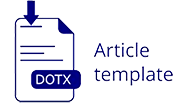THE EFFECTIVENESS OF USING STATION ROTATION MODEL TO IMPROVE STUDENTS’ READING SKILL IN RECOUNT TEXT (A Quasi Experimental Research at the Tenth Grade Students of MA NU Mu’allimat Kudus)
Abstract
The objective of this research is to find the effectiveness of using Station Rotation model to improve students’ reading skill achievement, especially for recount text at the tenth grade students of MA NU Mu’allimat Kudus academic year 2017/2018. The subjects of this research were 80 students. Experimental research was used as a method in this research. The research was conducted in two group, they are the experimental group and the control group. The experimental group was students which were taught by Station Rotation model, while the control group was students which were taught without Station Rotation model. The data were gathered through tests which were delivered into the pre-test and the post-test. The result of the research showed that Station Rotation model is effective to use in teaching reading skill in recount text. Gained score of the experimental group (19.7) is higher than the control group (9.6). From the result of statistic calculation, it was obtained that the value of t-observation (to) is 3.97 and degree of freedom (df) is 78. In the table of significance 5%, the value of degree of significance is 1.99. Comparing those values, the result is 3.97 > 1.99 which means t-observation (to) score is higher that t-table (tt) score. In other words, the Alternative Hypothesis (Ha) is accepted and the Null Hypothesis (Ho) is rejected. Therefore, teaching reading skill in recount text by using Station Rotation model is effective.
Keywords
Full Text:
PDFReferences
Anderson, Mark.,& Anderson, Kathy. (1997). Text Type in English. Melbourne: MacMillan Education.
Bath, Debra.,& Bourke, John. (2010). Getting Started with Blended Learning. Australia: Griffith University.
Bland, J. M., & Altman, D. G. (1996). “Statistics Notes: Measurement Error Proportional to the Mean”. British Medical Journal, 312 (7047), 1654.
Department of Education and Early Childhood Development. (2012). Blended Learning: a Synthesis of Research Finding in Victorian Education2006-2011. Malbourne: Ultrahel& Digital Learning Branch.
Harmer, Jeremy. (2007). The Practice of English Language Teaching-4th Ed. Oxford: Pearson Longman.
Harmer, Jeremy. (2007). How to Teach English. England: Longman Pearson Education.
Mickulecky, B.S. (2008). Teaching Reading in a Second Language. Oxford: Pearson Education.
Mubarok, Husni. (2015). Research in Language Education: An Introduction for Beginners. Jogjakarta: Lingkar Media.
Nuttal, Christine. (1989). Teaching Reading Skills in a Foreign Language. Portsmonth: Heinemann.
Serria, Aline.,& Molina, Elizabeth Carrandi. (2013). AnInovation Sensation: Shifting Charter School from Traditional to Blended Learning Models. Florida: Broward College.
Staker, H., & Horn, M. B. (2012).Classifying K-12 Blended Learning. Mountain View: CA Innosight Institute.
DOI: https://doi.org/10.34001/edulingua.v5i1.823
Article Metrics
Refbacks
- There are currently no refbacks.

Ciptaan disebarluaskan di bawah Lisensi Creative Commons Atribusi 4.0 Internasional.











